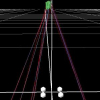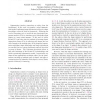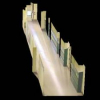CVPR
2006
IEEE
15 years 1 months ago
2006
IEEE
This paper presents a technique to automatically stitch multiple images at varying orientations and exposures to create a composite panorama that preserves the angular extent and ...
CVPR
2006
IEEE
15 years 1 months ago
2006
IEEE
Localization and mapping in unknown environments becomes more difficult as the complexity of the environment increases. With conventional techniques, the cost of maintaining estim...
CVPR
2006
IEEE
15 years 1 months ago
2006
IEEE
This paper introduces a tracking method for the well known local MSER (Maximally Stable Extremal Region) detector. The component tree is used as an efficient data structure, which...
CVPR
2006
IEEE
15 years 1 months ago
2006
IEEE
This paper presents a novel algorithm that improves the localization of disparity discontinuities of disparity maps obtained by multi-baseline stereo. Rather than associating a di...
CVPR
2006
IEEE
15 years 1 months ago
2006
IEEE
Johnson and Hebert's spin-images have been applied to the registration of range images and object recognition with much success because they are rotation, scale, and pose inv...
CVPR
2006
IEEE
15 years 1 months ago
2006
IEEE
Edge detection is one of the most studied problems in computer vision, yet it remains a very challenging task. It is difficult since often the decision for an edge cannot be made ...
CVPR
2006
IEEE
15 years 1 months ago
2006
IEEE
Scene flow represents the 3-D motion of points in the scene, just as optical flow is related to their 2-D motion in the images. As opposed to classical methods which compute scene...
CVPR
2006
IEEE
15 years 1 months ago
2006
IEEE
Segmentation involves separating an object from the background. In this work, we propose a novel segmentation method combining image information with prior shape knowledge, within...
CVPR
2006
IEEE
15 years 1 months ago
2006
IEEE
When we look at a picture, our prior knowledge about the world allows us to resolve some of the ambiguities that are inherent to monocular vision, and thereby infer 3d information...
CVPR
2006
IEEE
15 years 1 months ago
2006
IEEE
Human identification from gait is a challenging task in realistic surveillance scenarios in which people walking along arbitrary directions are shot by a single camera. In this pa...





